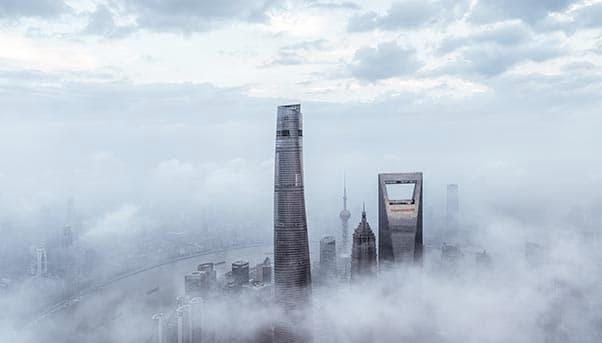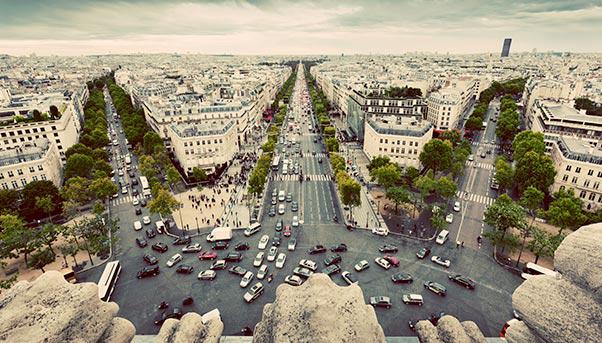
This discussion with Carlo Olmo is the first in a series of articles to be published by “We Build Value” in August. Part of a special issue entitled “Reinventing the City”, the articles will examine four major cities (Paris, London, New York and Hong Kong) whose infrastructure projects have or are changing their respective urban landscapes, offering new ways to interact with each city.
As Olmo sees it, a new era of infrastructure and other public works has begun, promising to make cities more liveable by making it easier for people to interact with their environment as well as with each other.
«There were – and there still are – different points of view (some successful, others less so) – with which society and culture have come to interpret infrastructure. From an icon of the first and second industrializations to a symbol of a wasteful culture, infrastructure has been judged in so many extreme ways.»
But Olmo says these extremes demonstrate how the idea of infrastructure has evolved over time.
«The dams and power plants in the Alpine mountains that travellers came to visit in the late 1800s, the structures at U.S. ports that caught the imagination of Rationalist architects, the bridges of Eiffel and Freyssinet, the docks at the ports of New York or Shanghai have gradually become synonymous with modernity. Just as, later in the 1900s, highways like the (Autostrada del) Sole in Italy (and) train stations like Grand Central in New York became obligatory sets for film and television. Another highway, Route 66, which opened on Nov. 11, 1926, became a dream for every traveller, especially Europeans and the Beat Generation. But it would take a film and a crisis to reverse this reassuring interpretation.»
«Both ‘Week-end’ (a 1967 film critical of contemporary society by French director Jean-Luc) Godard and the oil crisis (in 1973) put under a harsh light one of the myths that had settled in the (public) imagination: individual mobility. And the 1972 Meadows report by the (international association) Club of Roma on the limits of growth was to bring to an end its cultural hegemony. It would later take decades to rebuild the ideologies and …a new season of symbolic and social consensus regarding infrastructure.»
Olmo was referring to this new generation of infrastructure: more modern, less invasive on the environment and more sustainable in the way it is built.
«We had to wait for the arrival of two key words from a new language – sustainability and smart – at the end of the second millennium and the beginning of the third to create a narrative that was able to bring together various examples and offer a persuasive context,»he says. «Just the same, the ideas surrounding the terms sustainability and smart are not enough to solve big, complicated problems by themselves. In order to enter this new season of infrastructure, what is needed is to have this infrastructure become a ‘relational structure’ and not just an instrument used to reduce time, cost or waste. Infrastructure, which at one point was fundamental for progress, can today provide answers to social, economic and technological complexities if they are closely linked to the land and its people.
It is a journey that brings with it contradictions that are, as always, the most fun and interesting aspects of processes in which ideology, economic interests, technological advances and myth-making narratives come together in a way that cannot be easily untangled. And it might be worthwhile to try to examine some of them. The myth of progress, which had been the scaffolding for these narratives – even if it was showing signs of falling apart – is covered in cobwebs. With a bit of intellectual honesty and irony, we can bring to the scene the most emblematic of cases.»

Paris
«In Paris, we see two big infrastructure projects coming together: the Grand Paris Express and the Reinventer Paris. The Grand Paris Express – an automated, circular metro of 95 kilometres that will transport two million new passengers every day – not only goes against the idea behind the Grand Paris in which everything radiated from the centre. It also proposes mobility for what has now been defined as a ‘city without people’. Infrastructure, the stations… are imagined as a synthesis of a new urban design that is able to bring to fruition the idea behind the most enlightened modern architecture: giving those neighborhoods more character.»
The second project, Reinventer Paris, foresees the opening to the public of 34 underground sites that – as has been explained by Mayor Anne Hidalgo – hold the city’s secrets.
«Reinventer Paris concerns one of the most renown mythologies – that is not only literary – of Paris: the underground belly of the city (made famous by Victor Hugo in ‘Les Misérables’). But it does something novel by drawing interest to it without resorting to nostalgia.»
London
Paris is not the only example of how infrastructure can rewrite the face of a big city and change the way people pursue their lives. «The interaction between the imagined and the real does not interest only Paris,» continues Olmo. «In London, the Crossrail, which has many similarities to the Grand Paris Express, unknowingly revisits a utopia envisioned by John Paxton, designer of the Crystal Palace (the Victorian building conceived by the architect and inaugurated in 1851) and another piece of architecture that came to be seen as the most innovative of modern times: that which hosted the first Universal Exposition in London. A few years after 1851, Paxton dreamed up and designed a glass ring that would encircle London and would have trains travel within it – and not just from the city centre. Looking at the projects and rendering of the stations of the Grand Paris Express and Crossrail, the nostalgia for the inventions of Paxton cannot but … grow fonder!»
The new city
Building efficient, useful infrastructure that is integrated with the environment: that is the future. The same goes for cities: no longer are there «unique pieces» like London, Paris, Rome and New York, but (cities) designed to scale according to well-defined criteria.
«In June 2015, the Indian government presented a list of the first 20 cities that would provide a model that could be replicated for 100 smart cities,» says Olmo. «It was an authentic Smart City Mission, that combines urban planning and models that aim to give an identity to the city and make it more friendly. The Indian Smart City Mission is very prudent and does not presume that one model can be good for all despite the daily call for energy conservation, efficient networks and digital services.»
But there is another plan that for years foresaw a frontier that today seems, in many respects, the most central one: the use of the land and its taboo value. Two examples that mark the times of this new story are the Kansai airport in Japan (1994) designed by Renzo Piano and the new expansion of Hong Kong into the waters near the port. Both are part of a story about infrastructure that goes back for more than 20 years, one that is close to being a provocative representation of the theory of complexity and, at the same time, of the most radical process of institutionalization of expertise. Once again, it is the paradox of explaining these two complex phenomena since Hong Kong also has the dramatically complicated problem of supplying potable water to its residents!»
The supremacy of technical expertise
And so it is that technical expertise has attained what had for years seemed to be unattainable: taller skyscrapers, bigger dams and bridges that stretch across greater distances.
«Today maybe one can end up building infrastructure that allows you to ski at 46 degrees Celsius in Dubai at the Mall of the Emirates or a skyscraper to be completed in 2018 that stands at one kilometre in height and is energetically autonomous.»
But the secret to realizing all of this is still analysis, the study of the land and the needs of its people. «In 1716 the king of France assigned the Laboratoire (the initial nucleus that would later become the École des Ponts et Chaussées) a really intelligent task: to draw a map of all the lands adjacent to the roads of France. Without that such a widespread survey, the extraordinary modernization that led to a unified infrastructure network by the end of the century would not have been realize so so easily.»
To be smart, modern and useful is the real value of infrastructure, making it essential for humans and economic growth.
«In 1966 La Rance opened in France, the first power plant that produced electricity from tides. And thus began another story about the rapport between nature and the growing need among humans for energy and ways to produce it. Today, the bridge built near Ganghwa Island in South Korea as well as marine reserve at Race Rocks in Vancouver, put on display a new generation of infrastructure that shows how innovation searches for solutions that are more environmentally friendly and less invasive on minorities like the fishermen near Vancouver and the marine ecosystem.
The presence and repercussions of humans in nature have even come to involve the rapport between Earth and the moon that once inspired Greek poets! But the road to all things smart and sustainable is not lacking of conflict such as that faced by dams, bridges and highways. Perhaps conflict is the true essence of innovation – and maybe infrastructure itself since it brings together different worlds. It might be something that we too easily forget.»

